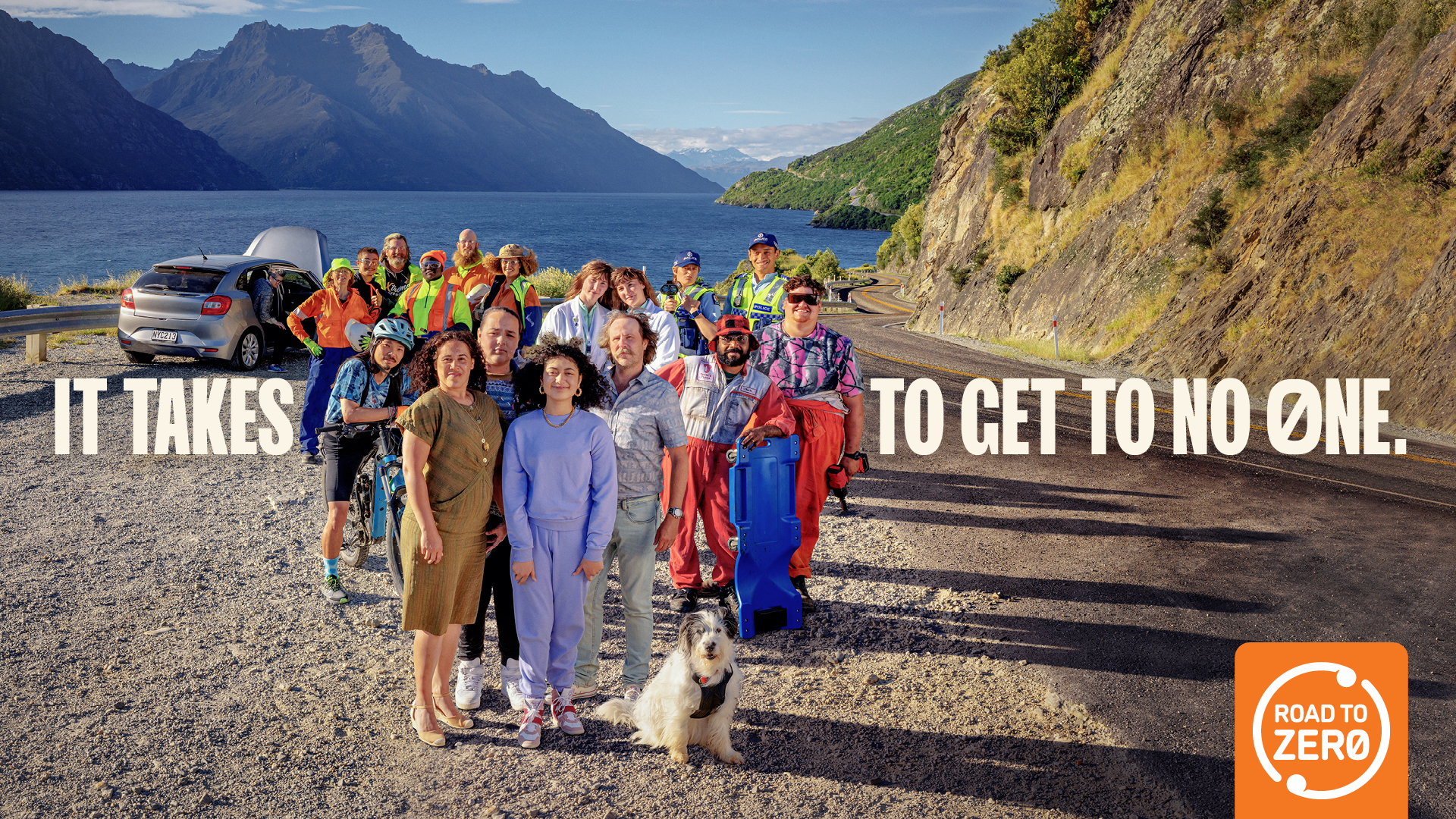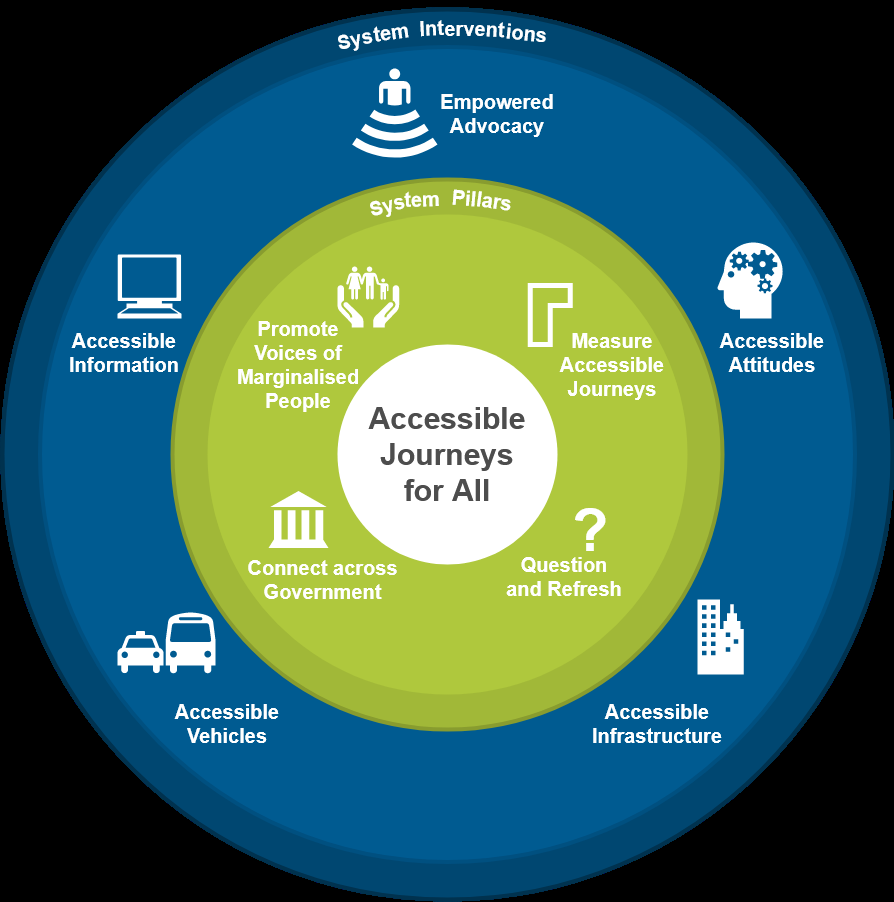Accessible public transport: the whole of journey approach
Mon, November 7, 2022 | EquityThis article from Transport Planner Kiri Crossland was originally published on LinkedIn.
Access to public transport is a complex issue. For many disabled people, the extra effort they must exert to make a journey can mean public transport is not an accessible option. There are lots of little things which can go wrong, and having multiple agencies manage distinct parts of a journey only adds to the complexity.
A whole-of-journey approach
When talking about transport accessibility for disabled people, we often employ the whole-of-journey approach. This involves looking at the entire journey, from before a person even leaves their house, up until they arrive at their destination.
In the context of public transport, we can break a ‘whole journey’ up into nine steps:
- Information: A disabled person must be confident they can make the entire trip. They may need timetable information or information about accessible features of the transport service or the presence/lack of barriers. All this information must be in an accessible format.
- Set-off from origin: A barrier-free path from the front door is needed. If the footpaths are barrier-free but someone cannot get to the footpath, they will be unable to make that journey.
- Travel to stop/station: Barrier-free footpaths are needed to ensure people can travel from their front gate to their stop/station.
- Wait: A safe and comfortable waiting area is needed to support disabled people.
- Board: The stop/station and vehicle must be designed so that disabled people can feel safe and confident while boarding.
- Time in-vehicle: Disabled people must be able to feel safe as soon as they enter the vehicle, as well as being free from discrimination from the driver or other passengers.
- Alight: Disabled people must be able to feel physically secure while the vehicle is moving, as well as being free from discrimination from the driver or other passengers.
- Leave stop/station: There must be a barrier-free route from the stop/station to the footpath.
- Travel to destination: Barrier-free footpaths are needed to ensure people can travel from the stop/station to their destination.
This approach is useful as it allows consideration of all the barriers that may prevent a disabled person from undertaking a journey at all. With nine steps, there are a lot of things that could go wrong! For many disabled people, this means meticulously planning every journey they need to take. Journeys that should be simple require problem-solving and contingency plans – or they simply don’t happen because it is too hard.
Barriers at every step of the way
In MRCagney’s recent research on the transport experiences of disabled people for Waka Kotahi NZ Transport Agency, we heard from over 15,000 disabled people from across the country. They gave us a detailed look at some of the most common barriers people face at these nine steps in their journey, particularly for people who travel by bus.
One of our main findings was that the information flow between disabled people and transport providers needs improvement. It doesn’t matter if schemes to improve accessibility are in place if people do not know about them. Total Mobility is the most comprehensive accessibility scheme Aotearoa has – it allows people who cannot access their local public transport service to travel by taxi at a discounted rate. However, many people who could benefit from it, do not know it exists as summed up by this survey response:
‘I don’t know what the Total Mobility scheme is – I do have a mobility card for parking – is this the same?’
Other people encountered physical barriers once they left home which meant they couldn’t reach their nearest public transport stop, or couldn’t access their final destination. There was a very wide range of problems such as cracks and bumps in the footpath, inability to socially distance on narrow footpaths, fear of e-scooters or cyclists on shared paths, or simply the distance people had to walk to reach the stop:
‘I need to travel from Rosebank Road to New Lynn to do my shopping. The nearest bus stop is approx 400 metres from my house. It takes me about 15 mins to walk this distance [...] I do try and make the trip once a week, but sometimes I just can’t summon the strength.’
Although many buses throughout Aotearoa are now fitted with ramps for improved accessibility, boarding and moving around the bus is still difficult or impossible for many people:
‘Bus drivers are very judgemental and won’t help. I almost always get stuck on the ramp into the bus, and 9 times out of 10 another passenger gets out of their seat to help me as the driver watches. I sometimes have comments made about how young I am and in a chair, or why I’m in a chair if I can move my legs, and I’ve been stuck in a ‘wheelchair’ area (that’s more likely made for prams) and other passengers had to get me out while the driver watched. It’s humiliating and degrading, you don’t feel like a person. Please train them to have more empathy.’
Whole-of-journey solutions
There are multiple agencies involved in providing public transport which can mean accessibility improvements are disjointed or isolated.
- City or district councils are responsible for the footpaths, bus shelters and local roads
- Waka Kotahi is responsible for the state highways
- Regional councils are responsible for the actual bus services and Total Mobility (unless you’re in Auckland, then it’s Auckland Transport)
Much of the focus on public transport to date has been on buses and trains themselves. However, this doesn’t mean much if poor footpaths or a lack of information prevents people from getting to the bus.
To address systemic barriers to accessibility we recommend an approach similar to the one taken for road safety in Aotearoa. Just as “it takes everyone to get no one” injured or killed on our roads, it takes everyone to ensure all people have access to public transport.

Image from the Waka Kotahi 2022 Road to Zero safety campaign
In our report for Waka Kotahi, we recommended a systems approach with a vision of accessible journeys for all. This should be supported by what we term ‘system pillars’ which connect the vision to actions. Finally, we describe five areas of intervention which group existing work into cohesive categories. By strengthening the system and improving the integration of the different agencies responsible, we can make real improvement to the accessibility of public transport.

Image from Waka Kotahi research report 690.